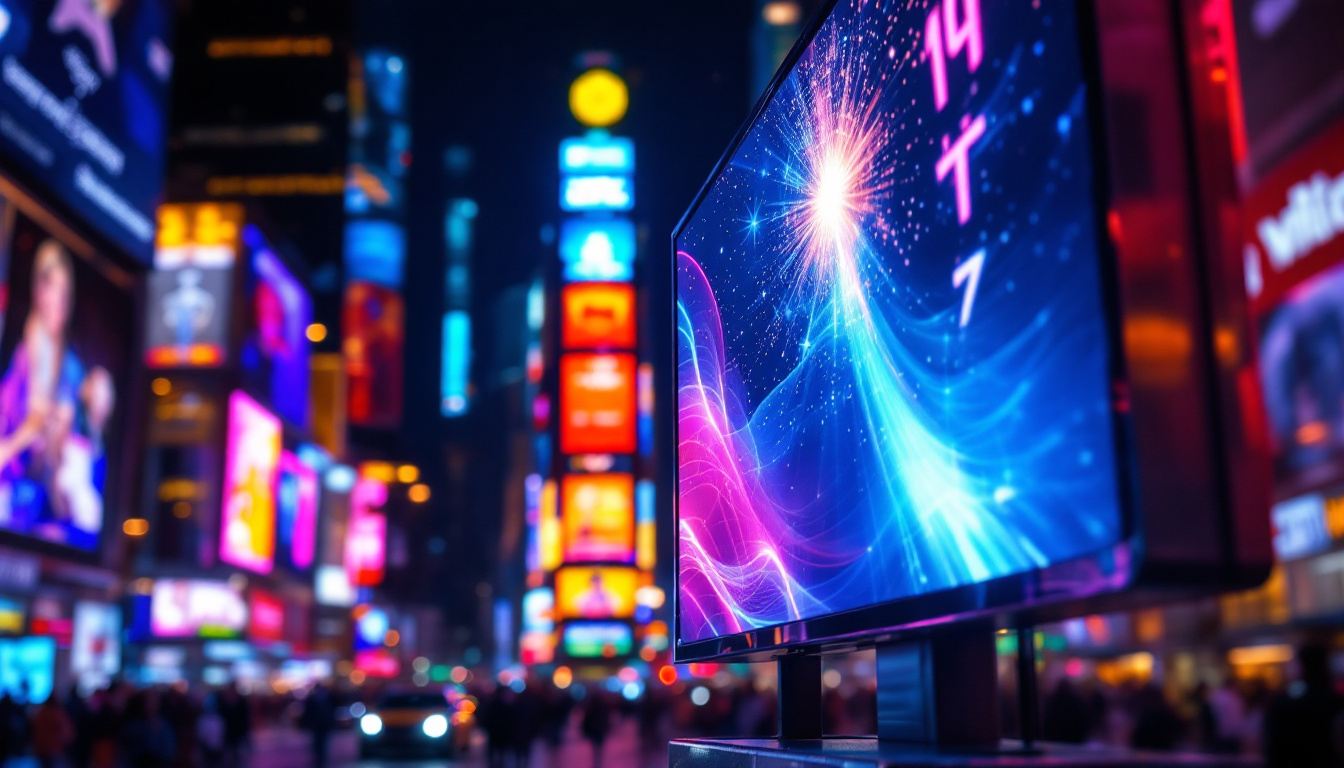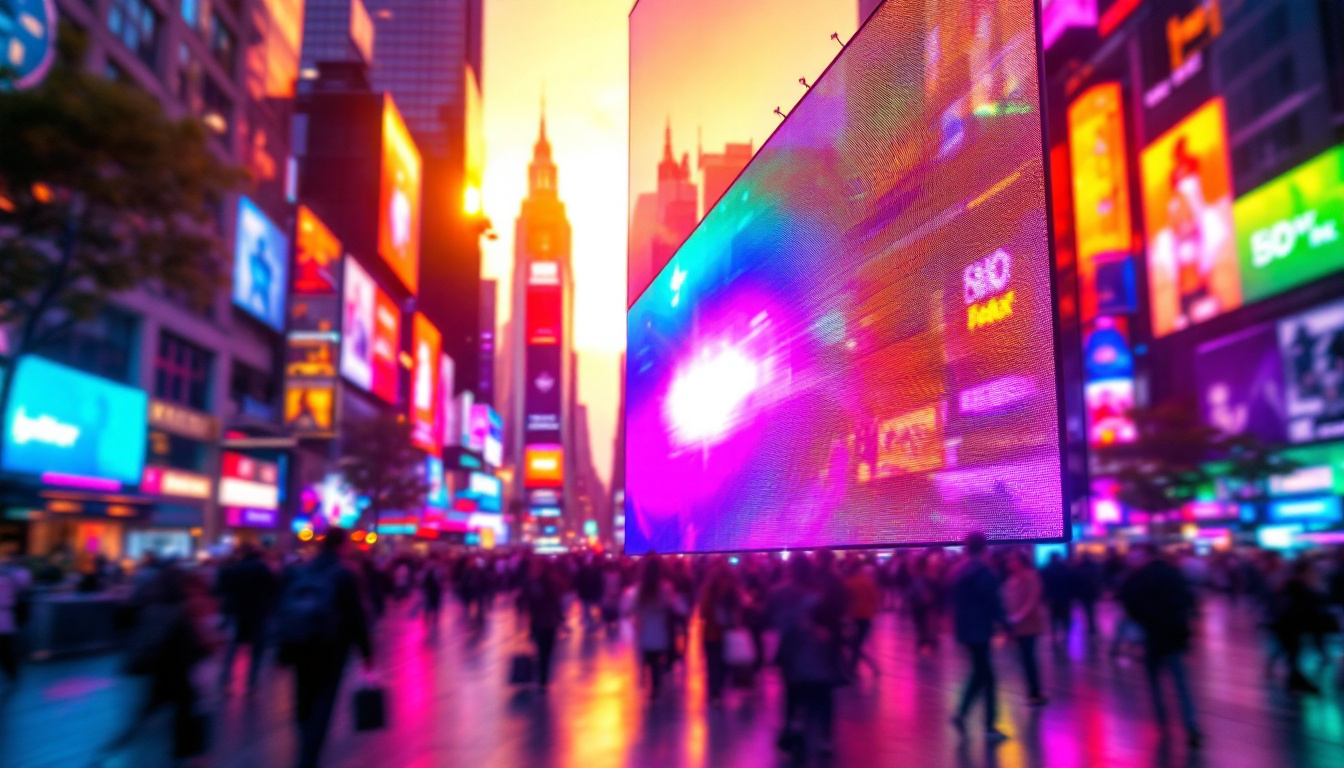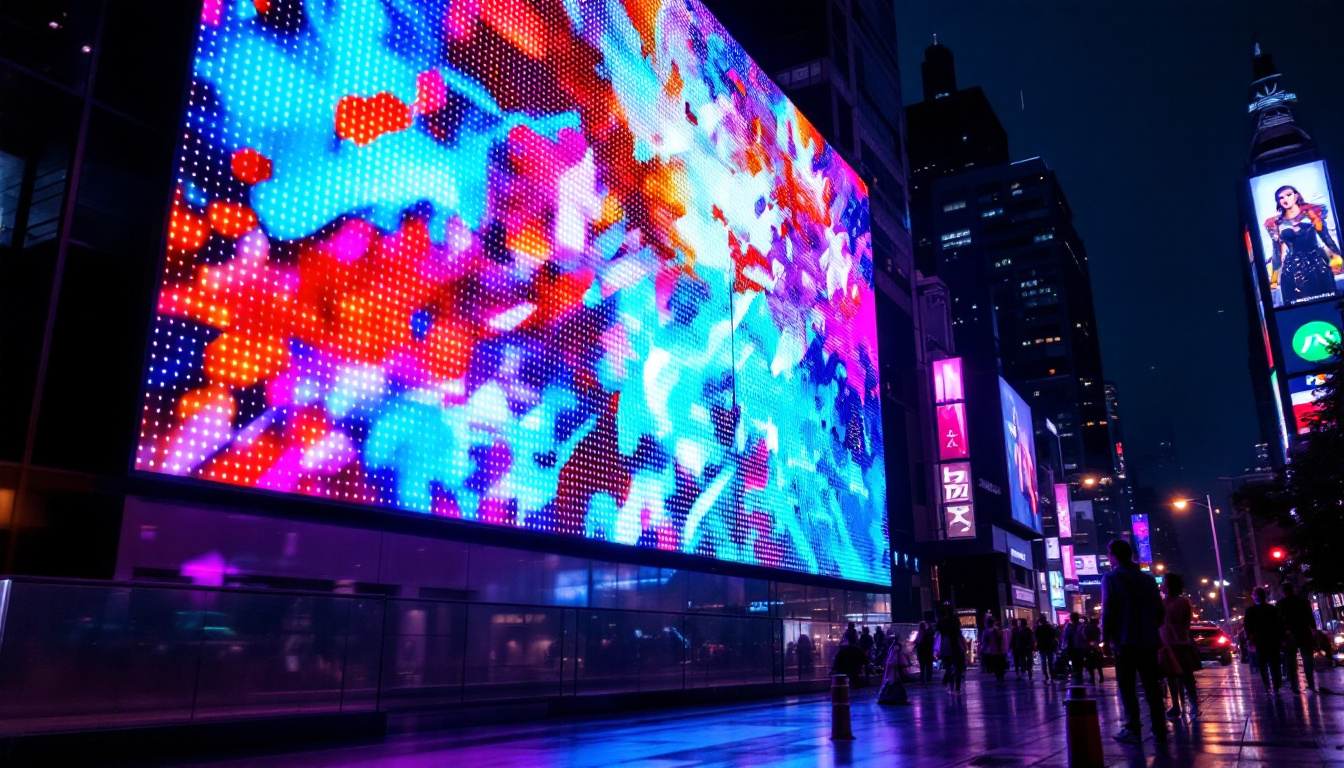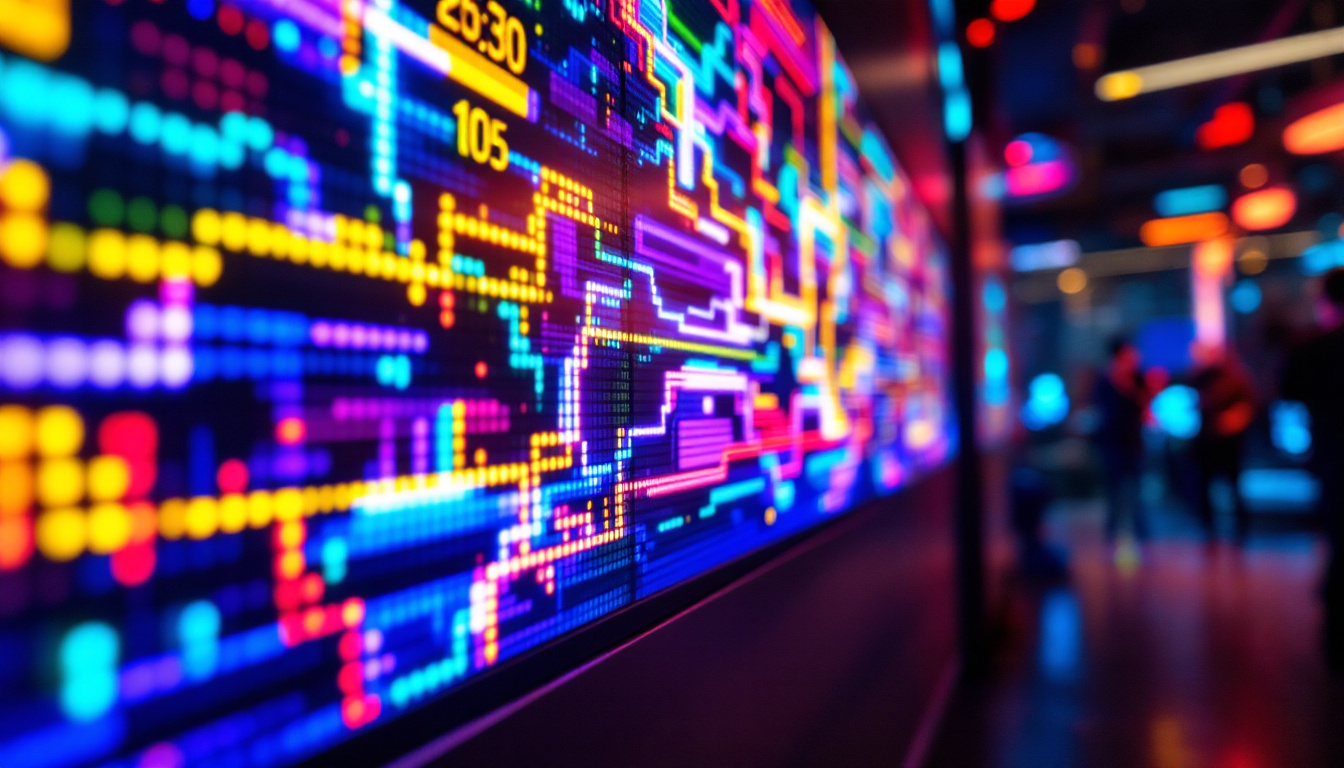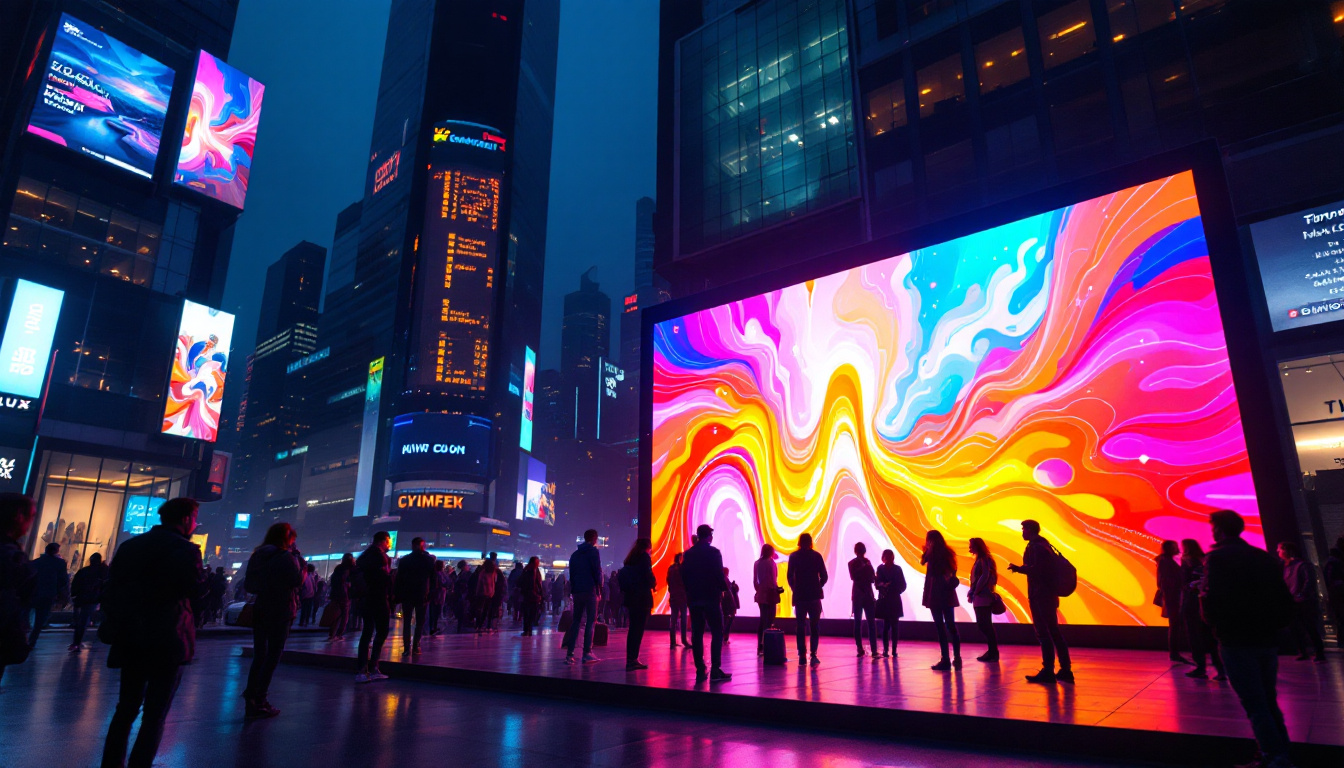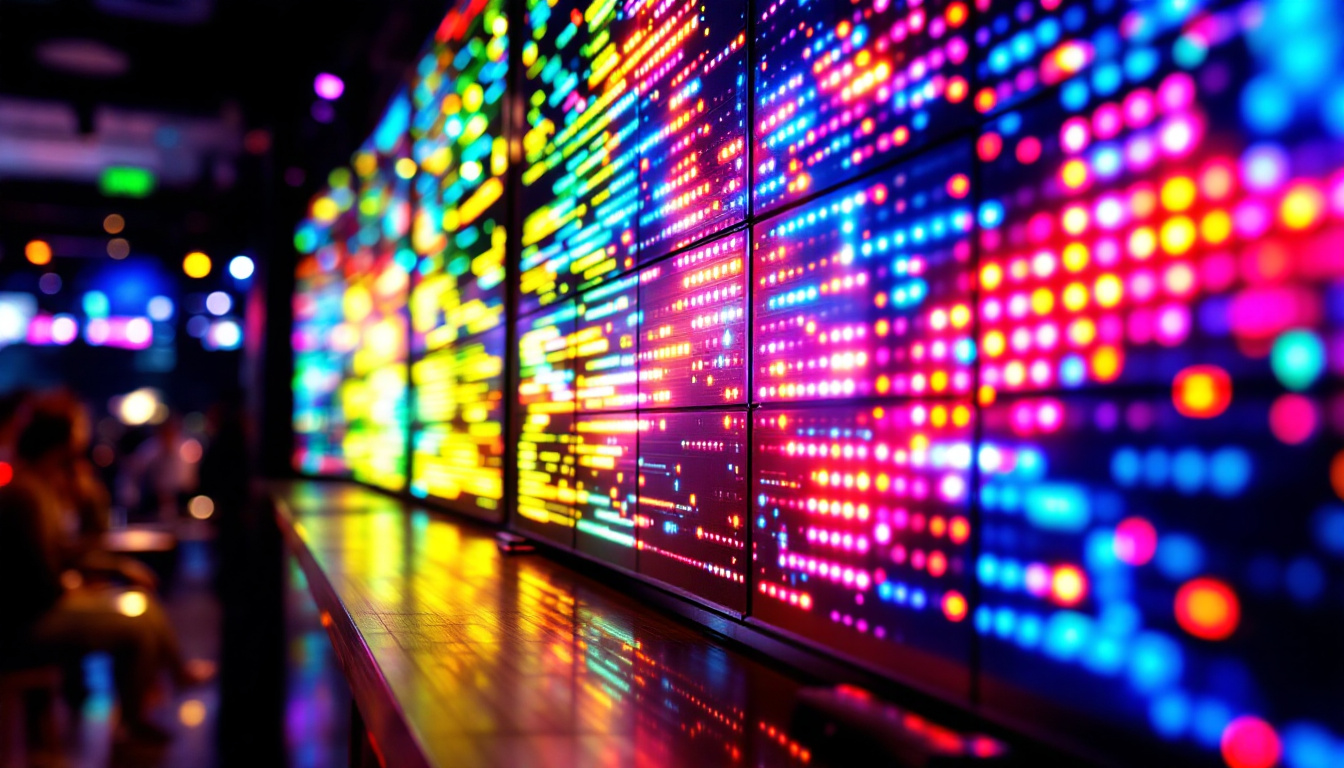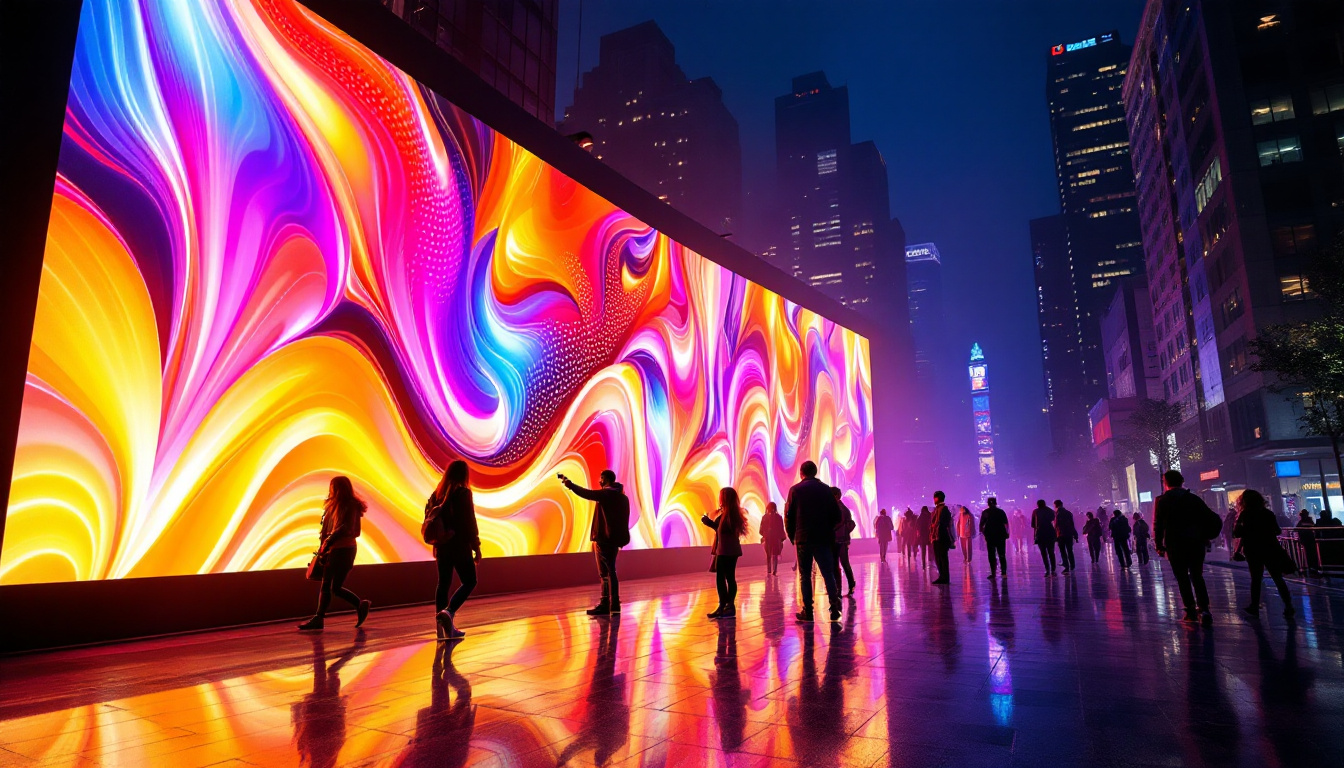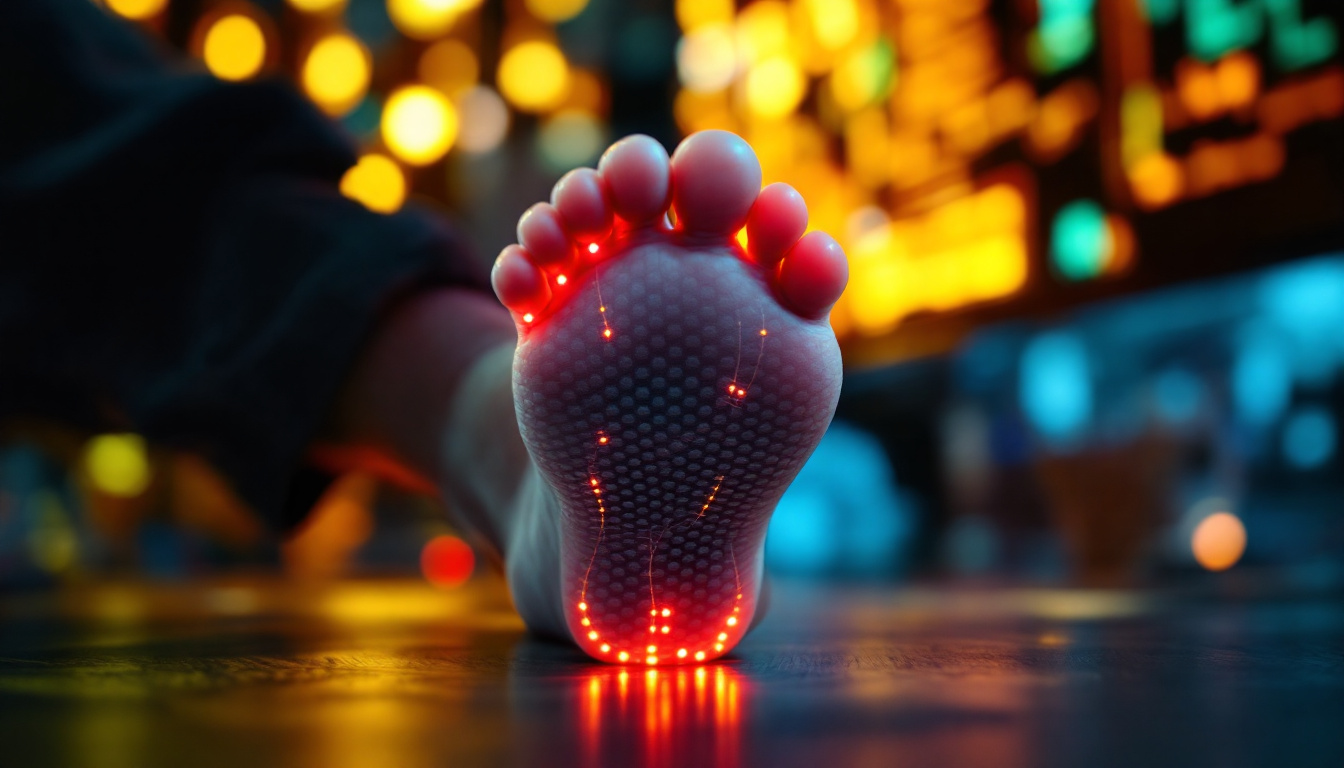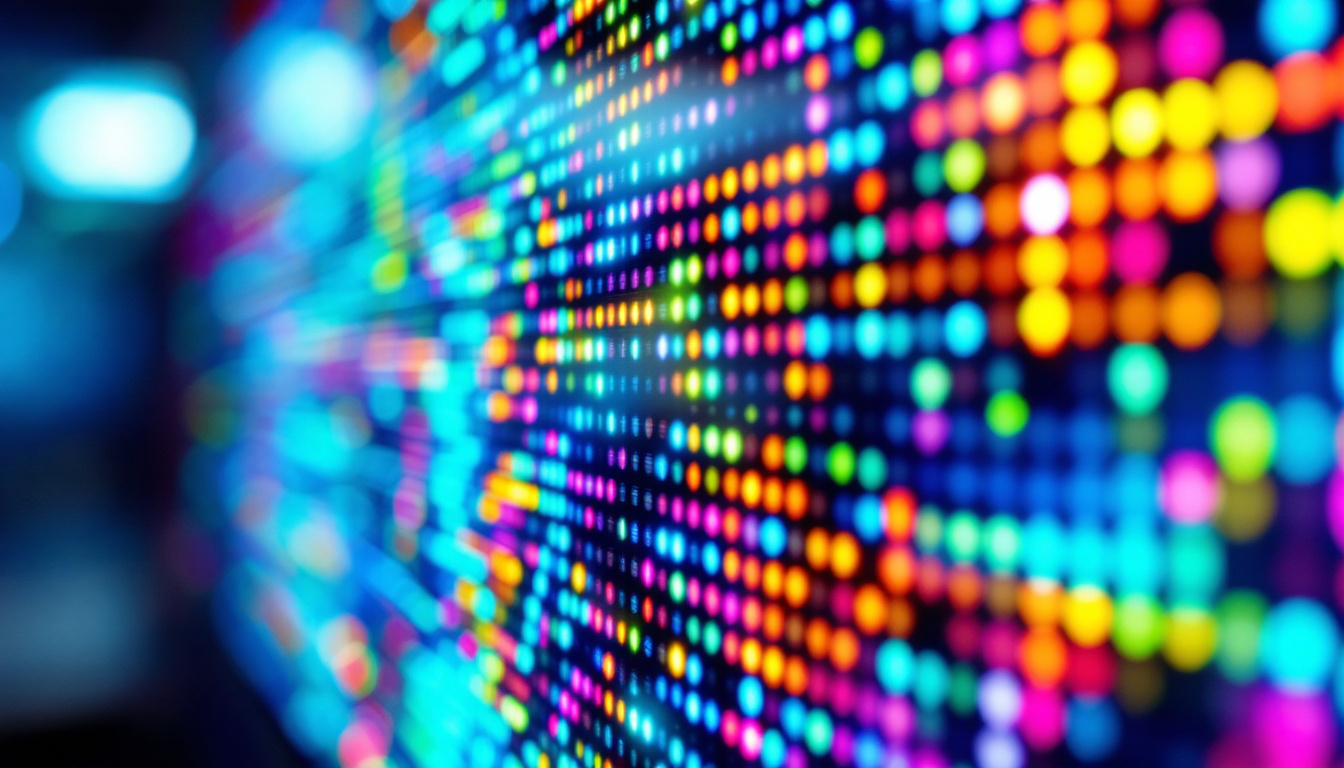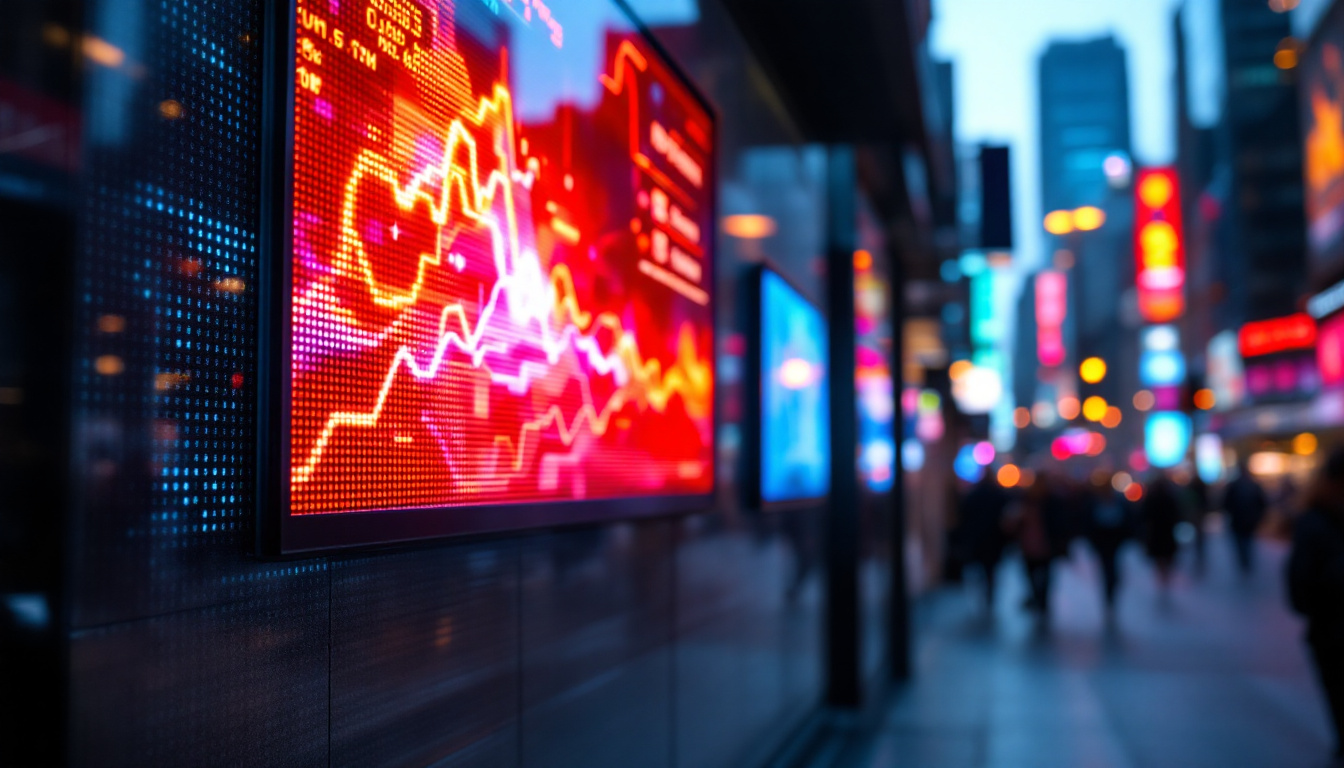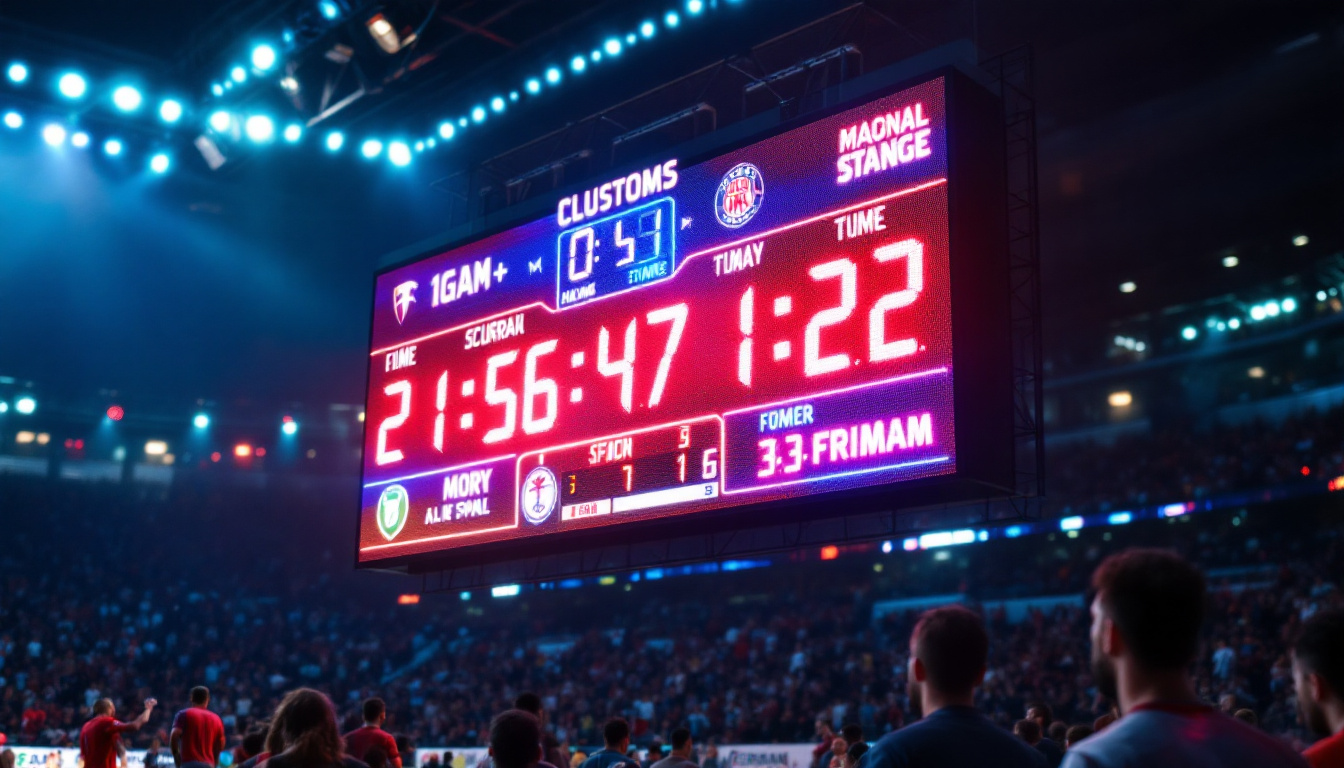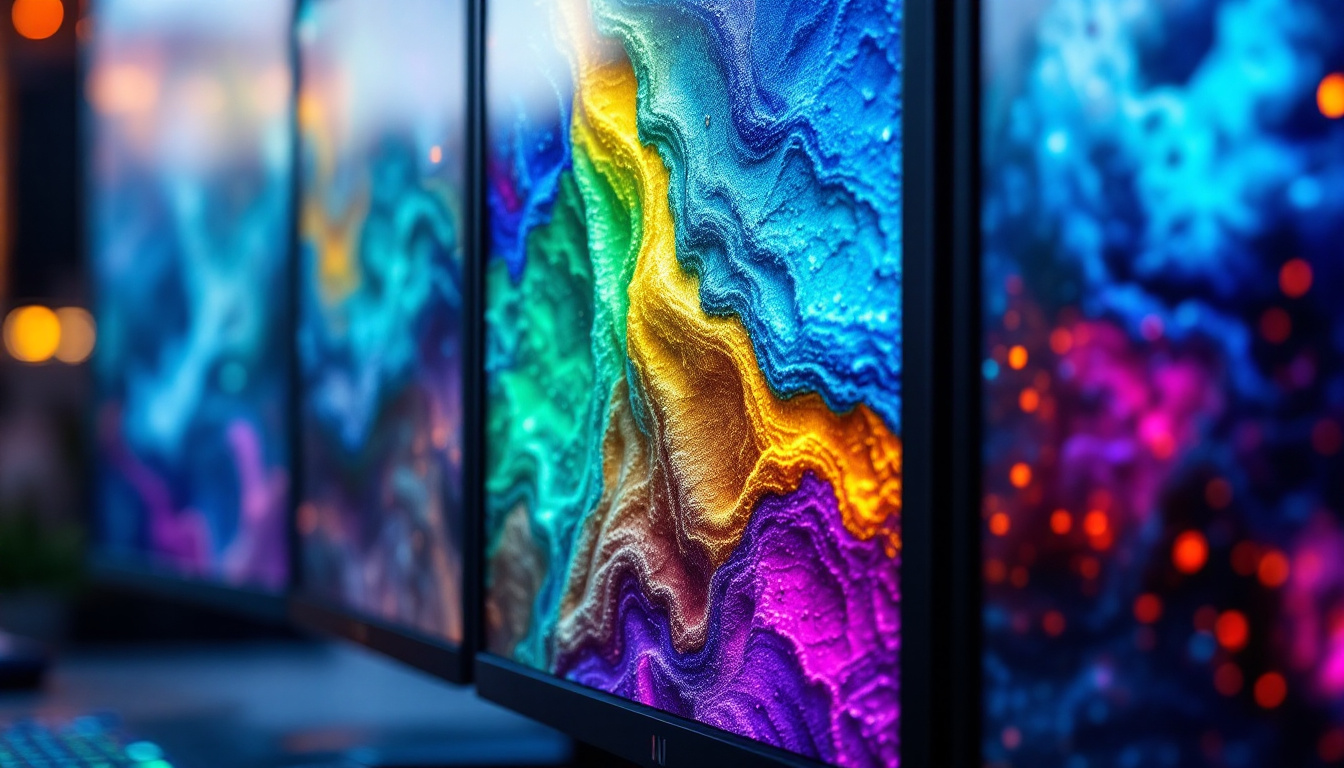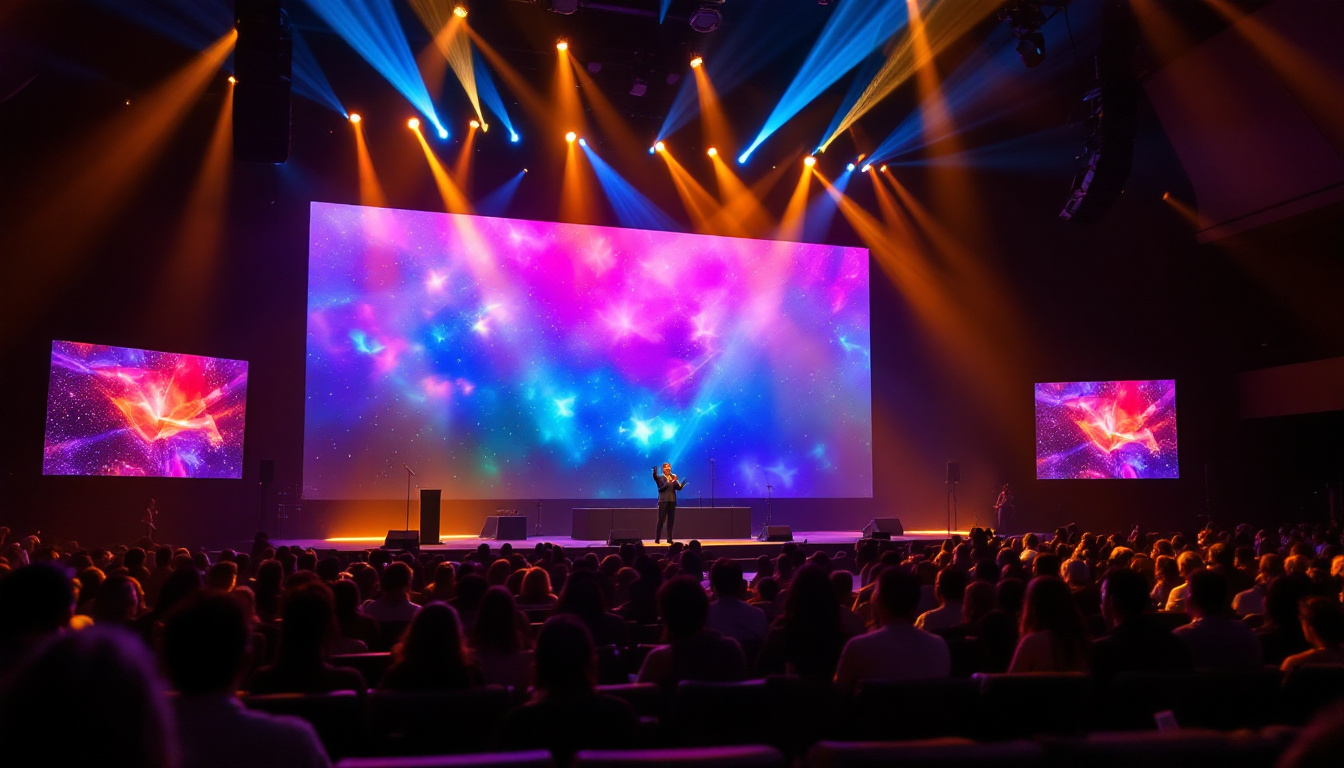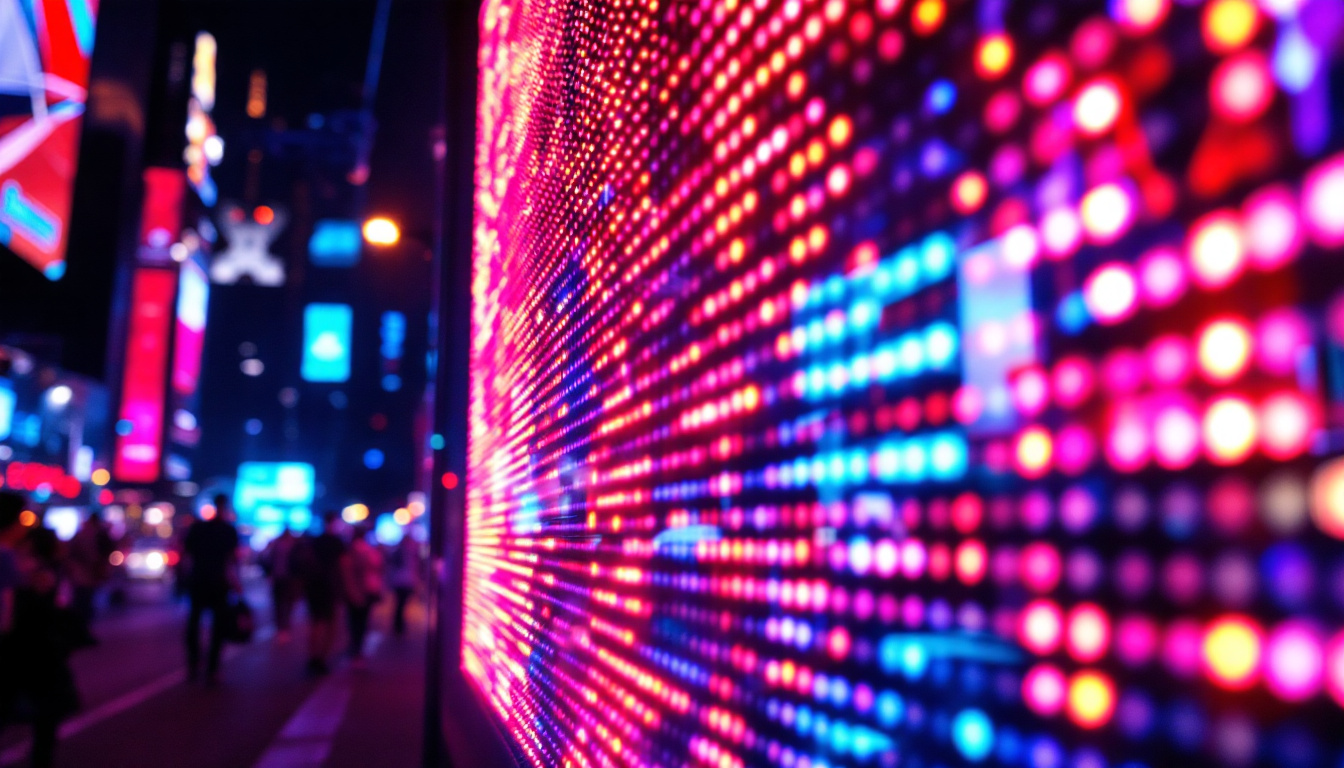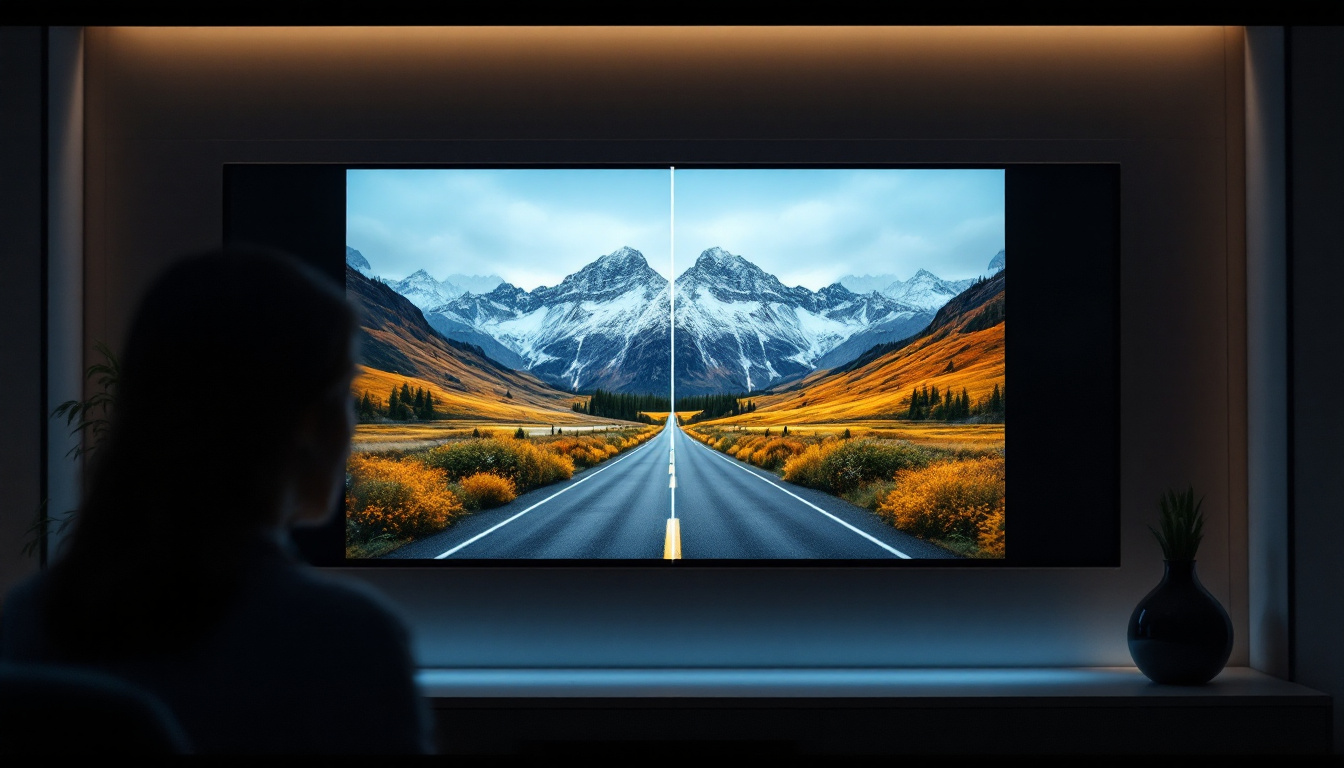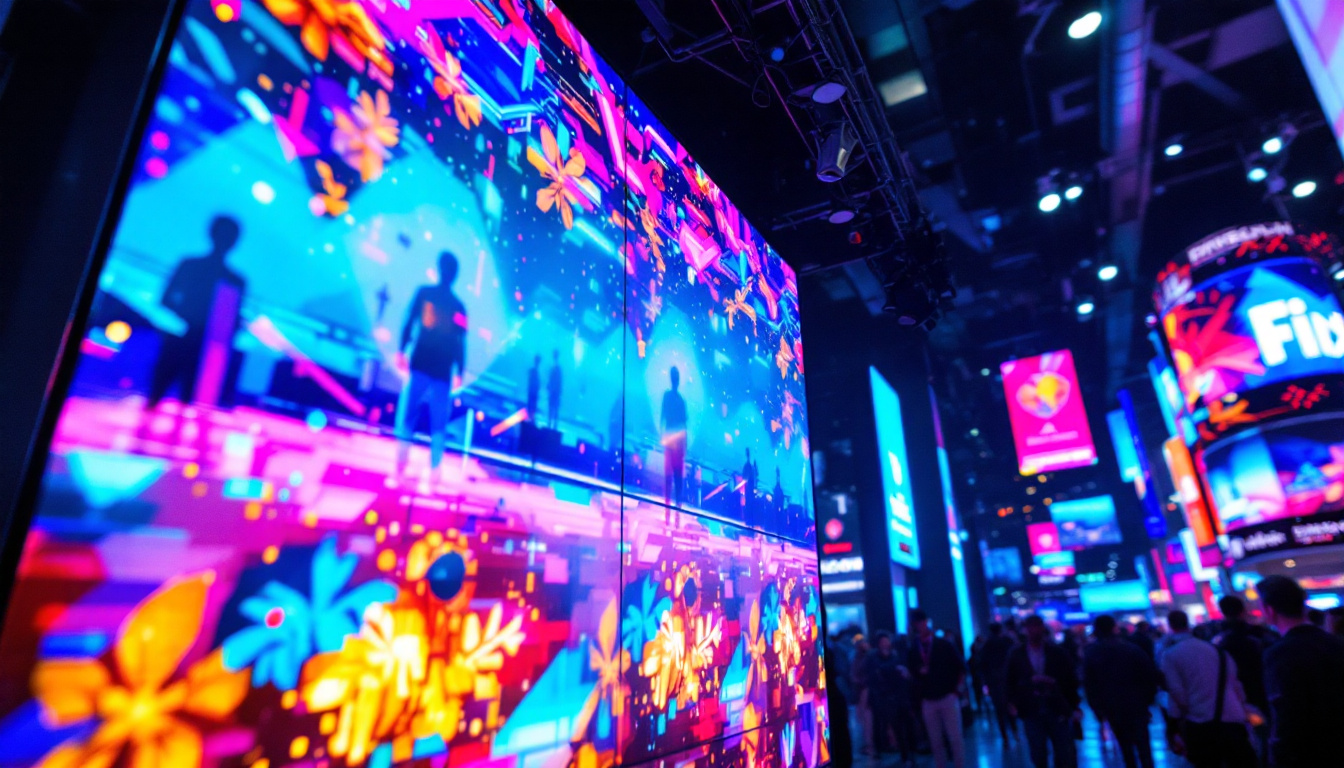In the realm of modern technology, LED displays have emerged as a cornerstone of visual communication. The Ldc screen, a specific type of LED display, offers a myriad of applications ranging from advertising to entertainment. This article delves into the intricacies of Ldc screens, exploring their functionality, advantages, and the technology that powers them.
Understanding LED Technology
LED, or Light Emitting Diode, technology has revolutionized the way visual information is presented. Unlike traditional display technologies such as LCD or CRT, LED displays utilize semiconductor materials to emit light when an electric current passes through them. This innovation has not only enhanced the quality of visual displays but has also led to significant energy savings and increased lifespan compared to older technologies.
How LED Displays Work
At the core of an LED display is a matrix of tiny LEDs that can emit different colors. These LEDs are arranged in a grid, and each pixel is made up of red, green, and blue (RGB) sub-pixels. By adjusting the intensity of each sub-pixel, a wide range of colors can be produced, allowing for vibrant and dynamic images. The precision of this color mixing enables LED displays to reproduce a broader spectrum of colors, making them ideal for applications that require high fidelity, such as graphic design and digital art.
The process begins when an image or video signal is sent to the display. The display’s controller interprets this signal and determines how much light each LED should emit. This rapid adjustment creates the illusion of motion and depth, making LED displays particularly effective for video content. Furthermore, the response time of LEDs is significantly faster than that of traditional displays, which minimizes motion blur and enhances the viewing experience during fast-paced action scenes in movies or video games.
Types of LED Displays
LED displays can be categorized into various types, each designed for specific applications. The two primary types are:
- Direct View LED: These displays are composed of individual LEDs that create images directly. They are often used in outdoor advertising and large-scale installations, such as stadium screens and concert backdrops. Their high brightness and durability make them suitable for environments with varying light conditions, ensuring that the visuals remain clear and impactful.
- LED-backlit LCD: In this configuration, an LCD panel is illuminated from behind by LEDs. This type is commonly found in televisions and computer monitors, offering better contrast and color accuracy compared to traditional LCDs. The use of local dimming technology in LED-backlit LCDs further enhances their performance by allowing specific areas of the screen to be dimmed or brightened independently, resulting in deeper blacks and more vivid colors.
In addition to these primary types, there are also specialized LED displays, such as organic LED (OLED) and microLED technologies. OLED displays utilize organic compounds that emit light when an electric current is applied, allowing for thinner panels and better viewing angles. MicroLED, on the other hand, consists of microscopic LEDs that can be arranged in any configuration, paving the way for flexible and modular displays that can fit a variety of spaces and uses. These advancements continue to push the boundaries of what is possible with display technology, making LED systems an exciting area of innovation in the tech world.
The Ldc Screen: A Closer Look
The Ldc screen is a specialized form of LED display known for its high resolution and clarity. It is particularly popular in environments where visual impact is critical, such as concert venues, sports arenas, and retail spaces. This advanced technology not only enhances the aesthetic appeal of any setting but also plays a crucial role in conveying information effectively, making it an invaluable tool for businesses and event organizers alike.
Key Features of Ldc Screens
Ldc screens are characterized by several features that set them apart from other LED displays:
- High Resolution: With pixel pitches as small as 1mm, Ldc screens can deliver stunning image quality, making them ideal for close viewing. This level of detail allows for intricate graphics and videos to be displayed with remarkable sharpness, ensuring that every visual element is crisp and engaging.
- Brightness: These displays can achieve high brightness levels, ensuring visibility even in bright environments. This feature is particularly advantageous for outdoor applications, where sunlight can often wash out images on lesser displays.
- Flexibility: Ldc screens can be configured in various shapes and sizes, allowing for creative installations that enhance the viewing experience. This adaptability means that they can be seamlessly integrated into architectural designs, creating immersive environments that captivate audiences.
Applications of Ldc Screens
The versatility of Ldc screens makes them suitable for a wide range of applications:
- Advertising: Ldc screens are widely used for digital signage, effectively capturing the attention of passersby with vibrant visuals. Their ability to display dynamic content allows advertisers to change messages in real-time, tailoring their approach to different audiences and maximizing engagement.
- Events and Entertainment: From concerts to corporate events, Ldc screens provide dynamic backdrops that enhance the overall experience. They can be synchronized with audio and lighting systems, creating a cohesive multimedia experience that leaves a lasting impression on attendees.
- Broadcasting: Television studios often utilize Ldc screens for live broadcasts, ensuring that viewers receive high-quality visuals. The clarity and color accuracy of Ldc screens make them ideal for news, sports, and entertainment programming, where every detail matters.
Moreover, Ldc screens are increasingly being adopted in educational institutions, where they serve as powerful tools for interactive learning. By displaying educational content in a visually engaging manner, these screens can enhance comprehension and retention among students. Additionally, their ability to connect with various devices allows for seamless integration into modern teaching methodologies, fostering a more dynamic classroom environment.
In the realm of sports, Ldc screens have revolutionized the way fans experience games. Not only do they provide real-time statistics and instant replays, but they also enhance the atmosphere with engaging graphics and animations. This technology has transformed stadiums into vibrant hubs of activity, where fans can enjoy a multi-sensory experience that goes beyond the game itself.
Advantages of Ldc Screens
The adoption of Ldc screens has surged due to their numerous advantages over traditional display technologies. Understanding these benefits can help businesses and organizations make informed decisions regarding their visual communication strategies.
Enhanced Visual Quality
One of the most significant advantages of Ldc screens is their ability to deliver exceptional visual quality. The high pixel density ensures that images are sharp and clear, making them ideal for detailed graphics and videos. This quality is particularly important in settings where visual content needs to engage and captivate an audience.
Energy Efficiency
Compared to older display technologies, Ldc screens are more energy-efficient. They consume less power while providing higher brightness levels, which can lead to significant cost savings over time. This efficiency not only benefits the environment but also reduces operational costs for businesses.
Durability and Longevity
Ldc screens are designed to withstand various environmental conditions, making them a durable choice for both indoor and outdoor applications. Their robust construction ensures that they can handle exposure to elements such as sunlight and moisture, extending their lifespan and reducing maintenance needs.
Challenges and Considerations
While Ldc screens offer numerous benefits, there are challenges and considerations that potential users should keep in mind. Understanding these factors can aid in making the right choice for specific applications.
Initial Investment Costs
The initial cost of purchasing and installing Ldc screens can be significant. Businesses must weigh this upfront investment against the long-term benefits and savings associated with energy efficiency and reduced maintenance. In many cases, the return on investment can justify the initial expenditure.
Technical Expertise
Operating and maintaining Ldc screens may require specialized knowledge. Organizations may need to invest in training for staff or hire professionals to ensure optimal performance. This requirement can add to the overall costs associated with Ldc screen implementation.
The Future of Ldc Screens
The landscape of visual technology is constantly evolving, and Ldc screens are at the forefront of this transformation. As advancements in technology continue to emerge, the capabilities of Ldc screens are expected to expand even further.
Integration with Smart Technology
One of the most exciting trends is the integration of Ldc screens with smart technology. This integration allows for real-time content updates, audience interaction, and data analytics. Businesses can leverage these features to tailor their messaging and improve engagement with their target audience.
Advancements in Display Technology
As research and development in display technology progress, Ldc screens are likely to become even more advanced. Innovations such as flexible displays, improved color accuracy, and enhanced energy efficiency are on the horizon, promising to elevate the capabilities of Ldc screens in various applications.
Conclusion
The Ldc screen represents a significant advancement in LED display technology, offering high-quality visuals, energy efficiency, and versatility. As businesses and organizations continue to seek effective ways to communicate visually, Ldc screens will play an increasingly vital role. Understanding their features, advantages, and potential challenges is essential for making informed decisions in a rapidly changing technological landscape.
As the future unfolds, the potential for Ldc screens will only expand, paving the way for innovative applications that enhance how information is shared and experienced. Whether in advertising, entertainment, or broadcasting, Ldc screens are set to remain a key player in the world of visual communication.
Explore Cutting-Edge LED Displays with LumenMatrix
Ready to elevate your visual communication with high-quality LED displays? Discover LumenMatrix’s innovative solutions, from Indoor and Outdoor LED Wall Displays to specialized options like Vehicle LED Displays, LED Poster Displays, and LED Sports Displays. Whether you’re looking to create immersive environments with Floor LED Displays, make a bold statement with Custom LED Displays, or streamline with All-in-One LED solutions, LumenMatrix has you covered. Embrace the future of display technology and captivate your audience with our LED Transparent Displays. Check out LumenMatrix LED Display Solutions and transform your space into a dynamic visual experience.

